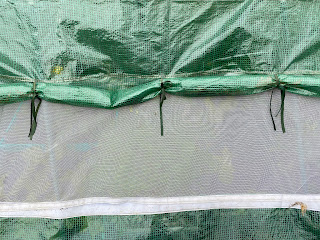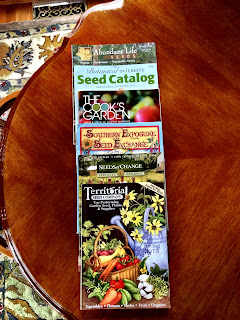December 31, 2022
As this year closes and a new year begins, gardeners dream of the possibilities for their spring and summer gardens. Big box stores have seeds in stock and all the seed starting supplies you need to get a jump on the spring season in January. My biggest issue is paring down all the plants and edibles that look fun and fabulous to grow to what can actually fit in my small space garden and pots and what is manageable.
Grow what you love!
The easiest way to fall in love with gardening is growing what you love to eat and look at. There is nothing like strolling out to the garden to see what's ripe and tasty for dinner and gathering blooms to bring inside for the table vase. If you have ever wanted to plant a kitchen garden, but weren’t sure if you had the space or skills, you may be surprised.
We grow all we need for fresh eating and putting away for the winter in our flower beds and pots. Just mix in greens, herbs and veggies with your flowers and bushes. Add edibles to your decorative pots. It looks great, flowers attract beneficial insects for more veggie production, and is so easy to run out and get what you want to eat that day right outside your door.
If you aren't sure you can grow veggies, start with herbs. Herbs thrive on neglect so are a great choice for dipping your toe into the edible gardening arena. This is how I transitioned from a purely ornamental garden to integrating edibles into my flower beds. A bonus is many herbs are perennials so only have to be planted once and come back year after year.
Herbs come in all different sizes as well. I love growing creeping thyme between stepping stones and around the perimeter of the garden. Oregano and tarragon are taller and have a tendency to fill out a space so better for the back of the garden. And there are many in between. Pick herbs that you use a lot in cooking and use those in your flower bed as a start.
You can grow a lot in a small space
It is common for Italians and French to have a small kitchen garden where they grow herbs, greens and vegetables year round. It is amazing the amount of food you can grow in a very small space! How to decide what to plant for small spaces?
If you have only a 6’ x 6’ space, a Mediterranean kitchen garden could include the following:
Herbs (1 each)-thyme, rosemary, sage, oregano, and flat leaf parsley
3 basil plants (for pesto and seasoning)
2 tomatoes-1 small fruiting and 1 slicer type
2 sweet pepper plants
1 zucchini (look for “bush” types as they are more compact)
1 eggplant
8 red bunching onions
8 garlic plants
Arugula, spinach and lettuce scatter sowed
For more details on a compact French garden: Small space French kitchen garden
For an Italian garden: Heirloom Sicilian kitchen garden To entice the little ones, an Italian garden can also be called a "Pizza or Spaghetti Garden"! Pizza garden for the kids
Use your patio to grow edibles with flowers
If you also have room for pots on the patio, you could grow the zucchini, eggplant, peppers and cucumber in pots (only 1 plant in each pot) and add 3 bush or 6 pole bean plants in the garden bed or pot with a trellis for them to grow up. Look at the descriptor on the seed package to see which type the bean plant is. Personally, I would stick with the beans you eat whole as shelled beans you do not get as much food per plant, and less food per space in a small garden.
If you have more room, you can add almonds (yes, they survive Midwest winters), beets, chard, fennel, chickpeas, figs (grows well in a pot too), asparagus, cardoon, chicories, radicchio, endives, broccoli, cauliflower, or artichokes.
If you are just beginning a garden, do start small. You want the garden to be fun and relaxing, not overwhelming. Don't be afraid to begin. The force of life is strong and really doesn't need much from us. Buy a few plants in the early spring and just put them in the ground with a natural fertilizer and you will be amazed at how they just go to town all by themselves!
 |
| Vintage WW2 poster |
My favorite catalogs are the ones that the links are on the right. I have ordered from them all and been happy with their selection and how well the plants did.
After you have the list, pare it down to your space
If you are like me, your list will be much longer than what you can grow in your space. The hardest part for me is crossing off what I will NOT grow this season. Split out what you want to grow by when they are producing in your garden, your cool season crops from your heat lovers. If you start in early spring, you will want to plant the crops that grow well in cool temperatures like lettuce and spinach. Spring edible garden When all chance of frost has passed is when you will plant the heat lovers. A summer edible garden If you are just starting, start small and only try 2-3 of your favorites so you can easily care for them and learn about gardening.
Here is my garden plan for 2023 Edible garden plan for 2023
Still having trouble deciding? Well, you have some time before the season starts. Heck, you can procrastinate all the way to June.......... It is not too late to start a garden in June! You can use this time to make your plan based on what you eat this winter. Use this winter to figure out what to grow in the ...
For more on steps on putting in a garden: Easy ways to make a new vegetable garden bed















